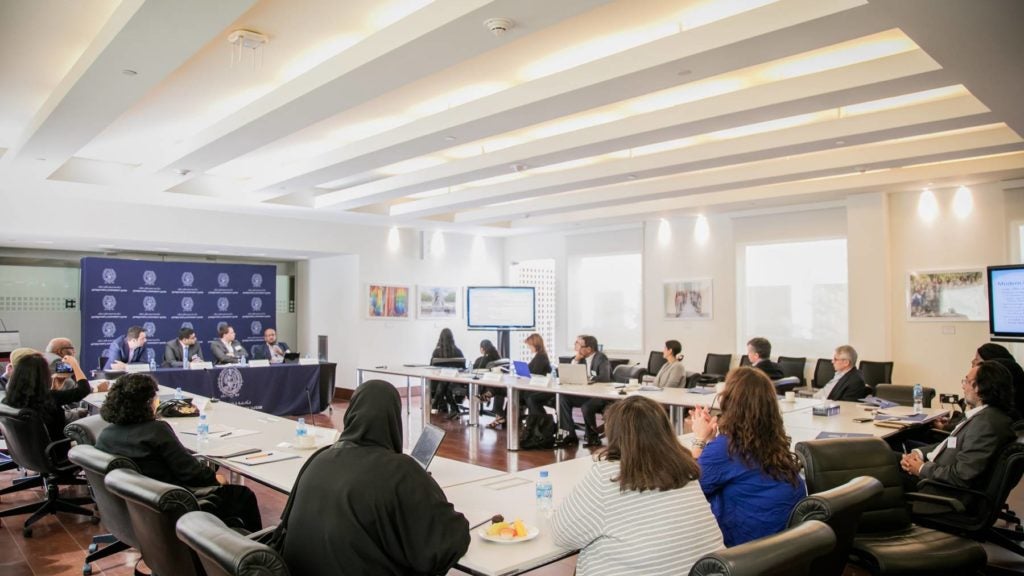Expert Researchers Gather for Georgetown Indian Ocean Symposium

World-class scholars from across the globe gathered to trace the social currents of the Indian Ocean region at a recent event at Georgetown University in Qatar (GU-Q). Hosted by GU-Q’s expert faculty, the symposium aimed to explore arts, ideologies, and identities in this macro-region.
The Indian Ocean is an important area of study, as the diverse region connects the Red Sea to the African continent, the Middle East, the Asian sub-continent, and the Far East. GU-Q’s faculty are driving in-depth study of the region with research that is at the cutting edge of theoretical and ethnographic fields.
“The Indian Ocean has been a theatre of human interaction throughout world history, with extensive challenges arising from retelling this history from the perspective of the sea. It is these very challenges that make the study of the Indian Ocean so fascinating,” said GU-Q Dean Ahmad Dallal. “I hope we here at Georgetown University in Qatar will be able to continue our contribution to this important topic of research.”
From the Horn of Africa to Southeast Asia, the event took a close look at a number of topics related to the countries bordering the Indian Ocean. These included the relations between Arabian and African nations, Russia’s interests in Somalia in the 1970s, and Cold War considerations in Tanzania.
The symposium featured respected scholars from institutions including Columbia University, Cambridge University, the University of Mumbai, and the University of Cape Town, among others. The keynote speech was given by Dr. Prita Meier, assistant professor of African art and architectural history at New York University, who explored the history of photography on the Swahili Coast.
The event is the latest in a series of research initiatives and workshops on the region at GU-Q. It follows from a previous symposium in April 2017, and GU-Q’s annual faculty conference, which was convened under the theme of ‘The Liberal State and its Alternatives in the Indian Ocean World’ in March last year.